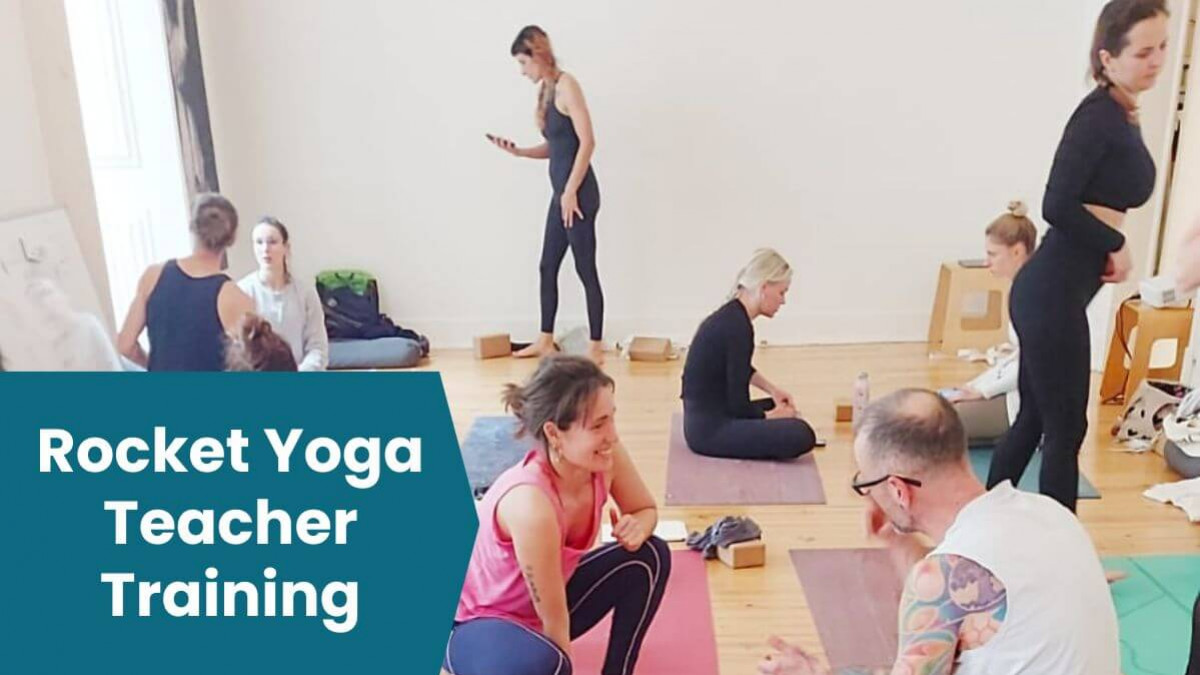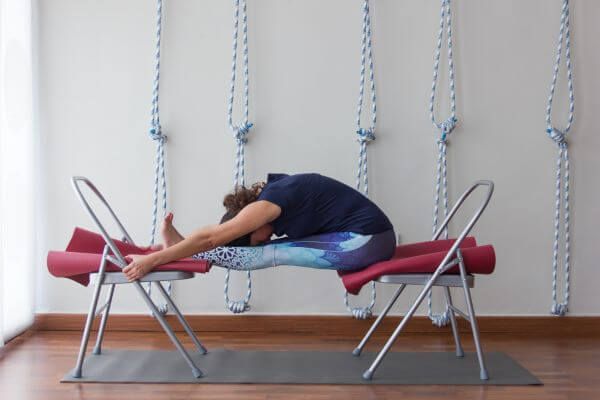Rocket Yoga Teacher Training Lisbon

Reflections from 50 hour Rocket Yoga Teacher Training with Lita Sattva in Lisbon Portugal.
.
This past weekend I spent 5 days in a 50 hour Rocket Yoga Teacher Training in Lisbon Portugal led by Lita Sattva.
.

.
“Why Rocket Yoga?”
.
After the morning practice on the first day of the training we gathered in a circle and were asked this question. Why Rocket Yoga? Several of the participants were already deep into Rocket Yoga and teaching it. Some were not teaching yoga yet but just loved Rocket Yoga so much they wanted to experience more and learn more about the practice. For me, I was curious about the practice and wanting to do an in person yoga teacher training in Lisbon.
.
Over the past ten years I sporadically practiced Rocket Yoga in various cities including Houston, Oklahoma City, London, and Lisbon. Each time, I appreciated the dynamic challenge and consistent breath and rhythm of the practice. As a yoga teacher and practitioner dedicated to Baptiste Power Yoga, I naturally compared Rocket Yoga to the practice that I love. There are a lot of similarities, with the most obvious that they are both dynamic, physically challenging practices with opportunities for arm balances and handstands! Even though I love handstands, as I contemplated the question of "Why Rocket Yoga", I realized that it was how I felt around the people at a Rocket Yoga Class.
The sense of community fostered amongst practitioners is what I love the most about Baptiste Power Yoga, and I realized that the Rocket Yoga community seemed similar.
.
So after Lita welcomed us in “togetherness” and asked us each to share why we were there, it became clear to me. I wasn’t just curious. I was excited to experience Community. I know, this word gets tossed around a lot lately. I’ve been to many yoga studios (and other events) that advertise “community” but then it feels like no one is truly connecting with each other. This was not the case at this Rocket Yoga Teacher Training in Lisbon. By the end of the first day, we were connecting and lifting each other up. The experience of “togetherness” increased each day after and I can see how 2 days after the training it is already continuing.
.

.
If I joined the training for Community, I got exactly what I signed up for! Each and every person in the training taught me something and will forever be a part of my yoga history. What I did not sign up for but loved so much was a consistent connection to the history of yoga. We took time to honor the teachers before us and in that process I felt more connected to the community of practicers that also came before us. I discovered so much about my own yoga practice and teaching as we reflected on the history of Rocket Yoga.
.
There is a very long history to yoga and something I have been more and more curious about lately. It was exciting to learn about the history Rocket Yoga. In short, it was developed by Larry Shultz who was a student of K. Pattabhi Jois.
Pattabhi Jois was a student of Tirumalai Krishnamacharya. B.K. S. Iyengar was also a student of Tirumalai Krishnamacharya and was one of Baron Baptiste’s primary teachers.
.

.
Pattabhi Jois is known for the creating the Ashtanga method which is known for challenging and rather fast paced sequences that are to be strictly adhered to.

.
Though B.K.S. Iyengar and Pattabhi Jois had the same teacher, their legacy in yoga is much different. Iyengar Yoga classes tend to move at a much slower pace and provide significant detail on anatomy and alignment.
.

.
My experiences of practicing both Ashtanga and Iyengar yoga are somewhat limited. And they are probably limited because I never really fell in love with either of them. While I appreciate the vigor and pacing of the Ashtanga classes, they often feel too strict and rigid. They also tend to lack alignment cues and have too many "vinyasas"* for me. My experiences of Iyengar classes also felt too strict. They spend so much time on alignment and using props that leads to a lack of pacing and flow. I guess you could say I miss the vinyasas*!
.
*Here, "vinyasa" refers to the series of movements to link one posture to another. It is typically chaturanga to upward facing dog to downward facing dog."
.
So what does this all have to do with my experience of the Rocket Yoga Teacher Training? Well, I learned more about Larry Shultz and why he is known as the “rebel Ashtangi”. It seems he was like me and wanted a dynamic practice without so many rules. And that’s what Rocket Yoga offers. There is still a discipline to the practice, but it’s balanced by playfulness and freedom. It’s a modern approach that truly empowers the practitioners (and teachers) to be themselves.
.
I believe it is this focus on empowering people to be themselves that truly fosters togetherness and community.
.
This is what I always love about Baptiste Yoga. During the Rocket Yoga Teacher Training, it hit me that Baron Baptiste and Larry Shultz both found something in the practice of yoga that compelled them to practice and teach. And they also saw the benefits of adding more empowerment to the practice. Maybe it was just an American, hippy rebel thing?
It seems that Larry Shultz and Baron Baptiste both honor their teachers and the roots of yoga, but they also both honor their inner guru. And that’s what I love about both these practices!
.

.
This training reminded me that there are so many ways to practice and teach yoga. What’s most important is to be open to new ideas, and then to practice and teach in ways that feel authentic to you.
.
On the last day of the training, we each taught a 60 minute Rocket Yoga practice to a partner. It was a humbling experience. I struggled to remember the Rocket sequence and to give up my usual ways of teaching. I gained a new appreciation for different methods of pacing, cuing, and assisting. And I also gained a deeper appreciation for the Baptiste methodology of teaching that is so much a part of me.
.
I hear a lot of people criticize Rocket Yoga (and other “Power Yoga” styles) for being too strenuous and even “unsafe.” I think some people are surprised that I practie and promote these styles of yoga as a physical therapist (physiotherapist). While I think restorative yoga is needed by many to calm down and nourish our nervous systems, a gentle yoga practice does not build strength and mobility. The body needs stress to heal and be strong. And for that, I promote more challenging and dynamic practices with attention to alignment.
.
My approach to practice and teaching yoga is all about balance.
.
My teacher Baron Baptiste often refers to Sthira Sukha - the balance between steadiness and ease. For me the Journey Into Power sequence and the Baptiste methodology of teaching create so much space for this. If you’ve practiced with me (or simply acknowledge the name of my business “Yoga Anatomy School”) you know anatomy and alignment is something I am passionate about. And I also love movement and to experience vinyasa, the state of flow. Ultimately, the attention to alignment is not about getting the posture right, it is about creating efficiency in the body. When the body is well aligned it can move in and out of challenging positions with ease. This creates a sense of freedom in the body. Freedom to move ultimately leads to empowerment!
.
At the end of the Rocket Yoga Teacher Training in Lisbon, we discussed the importance of being true to ourselves in our teaching. Lita reminded us to take what resonates, and leave what you don’t need. To teach Rocket Yoga does not mean teaching just like the other Rocket teachers.
.

.
I am excited to bring much of what I learned from the Rocket Yoga teacher trining into my teachings while staying true to myself. Expect a balance of discipline and play; specific anatomy informed alignment cues and space for freedom to flow; honoring the history of yoga and its traditions as well as its progression.
.
Expect Sthira Sukha. And most importantly, expect a focus on empowerment, connection, togetherness, and community!
.
Join our growing community of yoga teachers who want to learn anatomy in a way that can be used in classes, even if it is power, vinyasa, Rocket, or Baptiste yoga!
You can get started by downloading the list of 16 Anatomy Informed Cues that I use in the middle of dynamic yoga classes to empower students to align their body for more stability and freedom.
.
CLICK HERE to get the list of cues!

Categories: : Yoga Anatomy, Yoga History, Yoga Teacher Training
I have read and agree to the terms & conditions.
 Trish Corley
Trish Corley 



